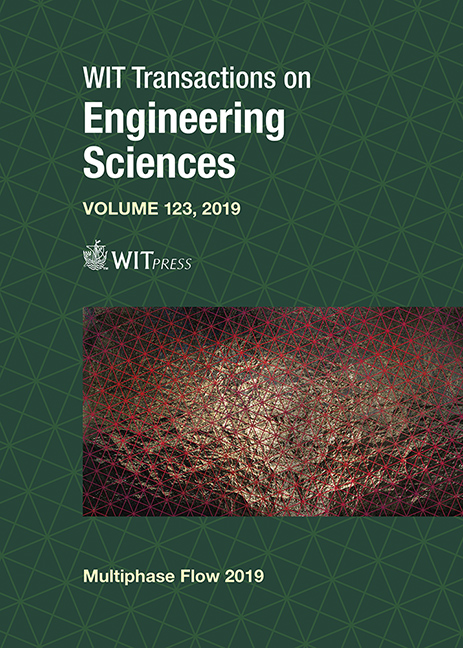BED EXPANSION CHARACTERISTICS IN MICROJET AND VIBRATION ASSISTED FLUIDIZATION OF TIO2 NANOPARTICLES
Price
Free (open access)
Transaction
Volume
123
Pages
7
Page Range
203 - 209
Published
2019
Size
292 kb
Paper DOI
10.2495/MPF190191
Copyright
WIT Press
Author(s)
KEJU AN, JEAN M. ANDINO
Abstract
A microjet and vibration assisted (MVA) fluidized bed was designed and tested to improve the fluidization quality of nanosized particles. Previous work relied on the addition of alcohol support in order to minimize electrostatic forces, thereby improving fluidization. The MVA method increased the fluidized bed height smoothly without the need for alcohol support. Thus, the MVA system is more versatile for use where the addition of a chemical may impact the process (e.g. environmental remediation). Commercial, nanosized TiO2 particles (P25 from Evonik Degussa) were analyzed in the MVA system. It was operated at its resonance frequency (50Hz), under different vibrational amplitude levels. The microjet was operated using a flow of nitrogen at 135.8, 170.3, 204.7, 239.2, 273.7 and 308.2 kPa resulting in a downward stream through the micronozzle (500 μm). The additional vibrational support enabled nanoparticle fluidization under lower inlet pressure and velocity conditions compared to systems where only a microjet was used. In the MVA system, the micronozzle velocity coupled with a vibrational intensity of 1.6 showed 5 times higher fluidized bed height compared to the packed bed. Optimal operating/processing conditions of the MVA system are suggested based on the experimental results. The results presented provide valuable parameters to develop computer simulations of large commercial and pilot scale fluidized bed systems.
Keywords
fluidization, nondimensional-height, microjet, vibration





